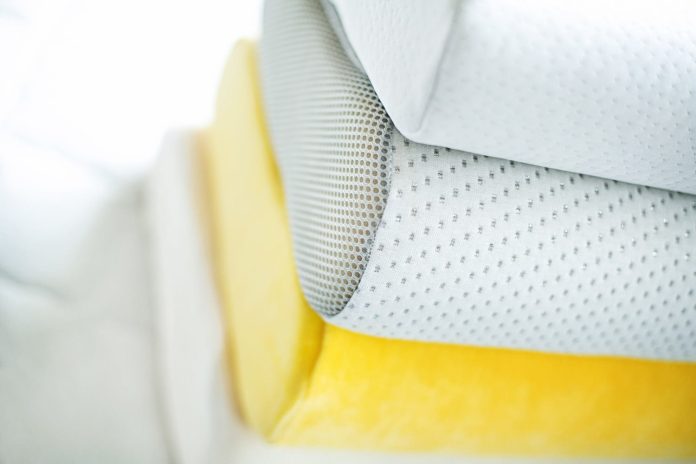Memory foam isn’t just used for mattresses anymore: it’s also used to make pillows. But is it a good idea to opt for memory foam pillows to complete your perfect bed? We’re reviewing our pillows today to see if it’s time for an upgrade.
Related guides
Is it time to look for a new pillow?
Maybe you sleep on your back and need extra support for your neck. Maybe you are looking for a cooling pillow to help your body reach optimal temperature. Likewise, you might think of something that can provide a little more comfort when traveling. Or you are simply looking for a vegan and/or hypoallergenic alternative to down pillows.
Whatever your own situation, it’s easy to find new reasons to buy a new memory foam pillow. But really, is it necessary? If your old pillows are making you sneeze, give you a sore neck every morning, or make you uncomfortable in your airplane seat, this might be a good time to consider a new memory foam pillow.

What’s the deal with memory foam pillows?
Like memory foam mattresses, Memory foam pillows are designed to conform to your body and absorb shock. As a result, they can provide better spinal alignment, and they may even help tame snoring. Memory foam pillows can help back sleepers Keep their necks aligned with their natural curves, and they can help side sleepers maintain proper form, too.
for Travelers who require more cushions For their long flights and car rides, horseshoe-shaped, compact memory pillows can provide snug comfort and much-needed neck support. Because memory foam is made from polyurethane, it’s a viable alternative to down feathers, which are collected from birds and can cause allergic reactions in some people.

It also means that memory foam pillows tend to maintain a consistent texture and shape — they’re less likely to clump over time than down pillows. They’re also more likely to stay firm throughout the night, unlike down pillows, which flatten out and need rearranging.
Who Really Needs Memory Foam Pillows, and Who Should Skip Them?
If you are sensitive to heat, you may need to tread carefully and check carefully Pillows specialized in keeping your head cool – especially pillows that use cooling fabrics like bamboo and cotton. If you’re particularly sensitive to smells, remember that some contain memory foam Volatile organic compounds (VOCs) that emit a pungent odor when new: This is known as outgassing. Typically, outgassing stops a few days after the memory foam in question is placed in a well-ventilated space. If you’re still concerned about the smell or possible health risks, be sure to look for products that are specifically labeled “Low VOCs.”
If you need a pillow that maintains a consistent texture, helps with pain and snoring, contains no animal by-products, and is great for both home and travel, then you can benefit from a new memory foam pillow. With so many options available now, finding the right memory foam pillow for you shouldn’t be difficult.

Editor’s Recommendations

We understand how important it is to choose a chiropractor that is right for you. It is our belief that educating our patients is a very important part of the success we see in our offices.


